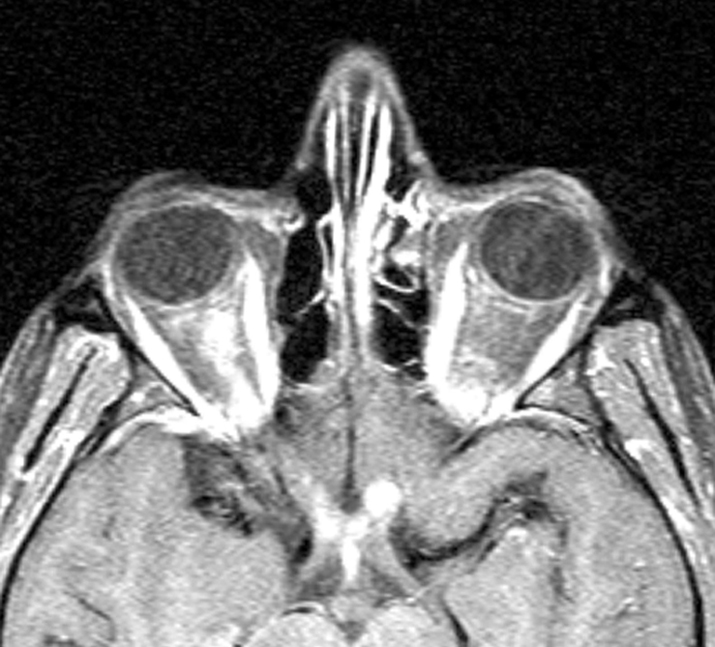Typical optic neuritis associated with MS causes vision loss over hours to days, with the nadir approximately 1 week after onset. Visual loss may be subtle or profound. Usually unilateral, rarely bilateral. Age typically 18 to 45 years. Retro-orbital pain, especially with eye movement. Acquired loss of color vision. Reduced perception of light intensity. May have other focal neurologic symptoms (e.g., weakness, numbness, tingling in extremities). May have antecedent flulike viral syndrome. Occasionally altered perception of moving objects (Pulfrich phenomenon) or a worsening of symptoms with exercise or increase in body temperature (Uhthoff sign).
More recently, immune-mediated disorders of the CNS, such as neuromyelitis optica spectrum disorder (NMOSD), have been described as causes of atypical optic neuritis. Atypical features include advanced patient age, severe vision loss with poor recovery, and simultaneous or rapidly sequential bilateral optic neuritis.
Beck RW, Cleary PA, Anderson MM Jr, et al. A randomized, controlled trial of corticosteroids in the treatment of acute optic neuritis. The Optic Neuritis Study Group. N Engl J Med. 1992;326:581-588.Beck RW, Cleary PA, Trobe JD, et al. The effect of corticosteroids for acute optic neuritis on the subsequent development of multiple sclerosis. The Optic Neuritis Study Group. N Engl J Med. 1993;329:1764-1769.Chen J, Pittock S, Flanagan E, et al. Optic neuritis in the era of biomarkers. Surv Ophthalmol. 2020;65(1): 12-17.Jacobs LD, Beck RW, Simon JH, et al. Intramuscular interferon beta-1a therapy initiated during a first demyelinating event in multiple sclerosis. CHAMPS Study Group. N Engl J Med. 2000;343:898-904.Optic Neuritis Study Group. Multiple sclerosis risk after optic neuritis: final follow-up from the Optic Neuritis Treatment Trial. Arch Neurol. 2008;65:727-732.
